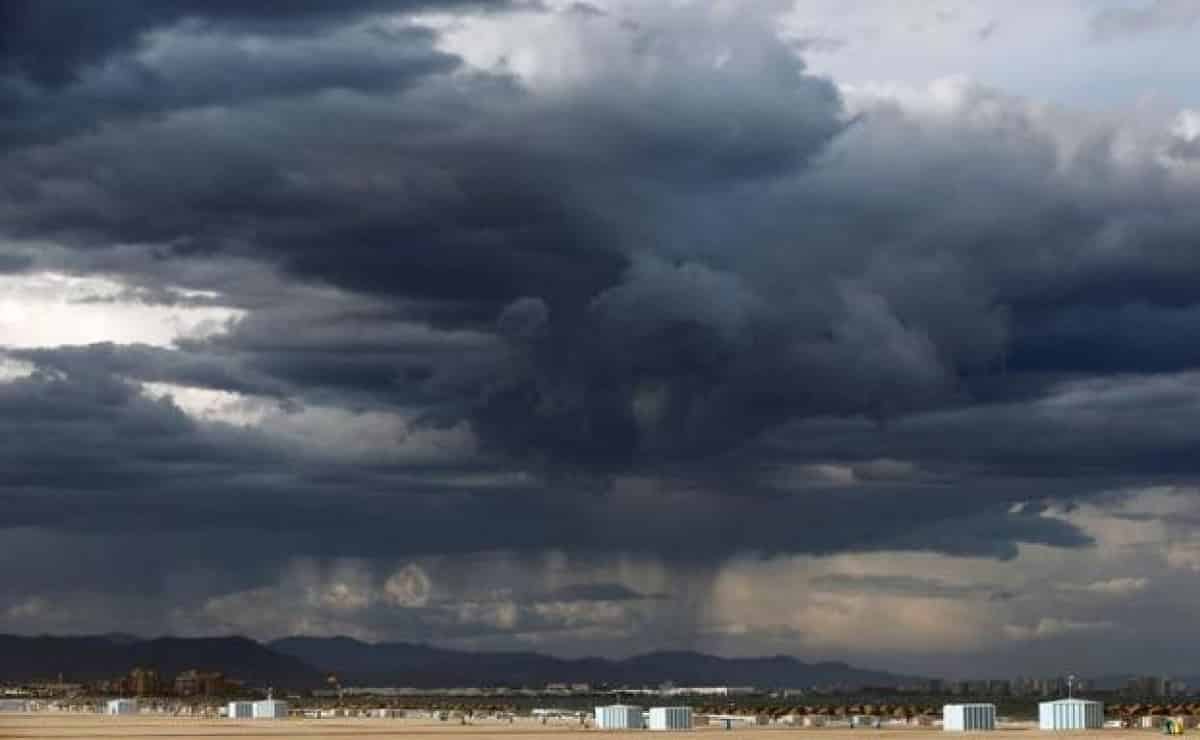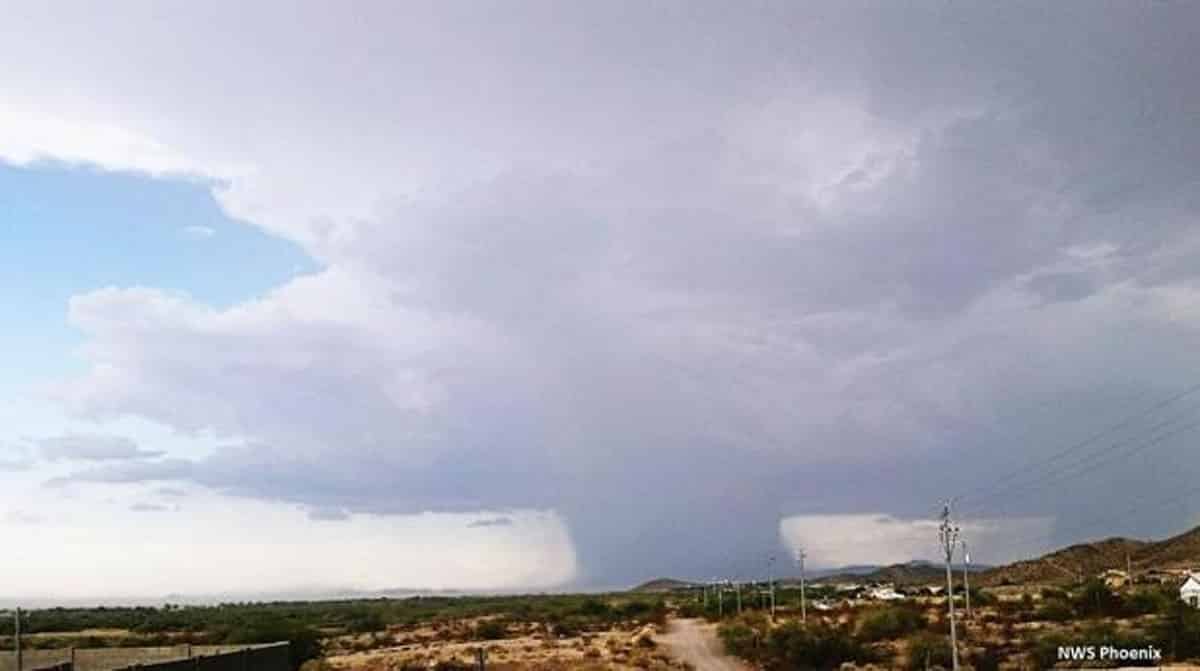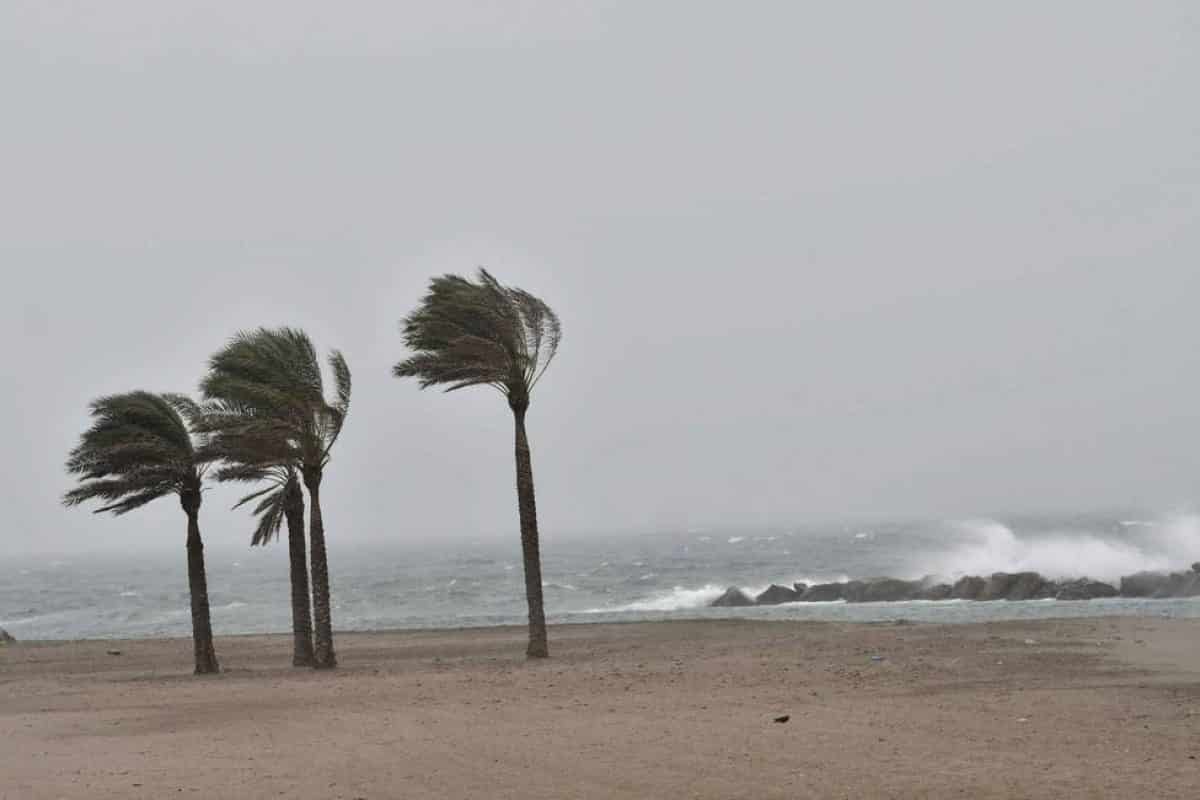
During the summer season some somewhat stranger meteorological phenomena occur that require special conditions for them to occur. One of these phenomena is thermal blowout. This is a phenomenon that occurs when falling precipitation evaporates as it crosses a layer of dry or very dry air in a warm environment.
In this article we are going to tell you about the characteristics, origin and consequences of thermal blowout.
Characteristics and origin of thermal blowout

As the air descends, it cools and becomes heavier than the surrounding air. When air cools, it becomes denser than the surrounding air, causing it to sink to the surface at a faster rate than the surrounding air. Once all the precipitation contained in the descending air has evaporated, the air is completely dry and can no longer evaporate. As the air descends, It is heated by compression of the atmosphere.
The air has to go through another process after the descending air can no longer be cooled, but the air continues to descend towards the surface due to its momentum. As air is compressed, it heats up. The hotter, drier air begins to sink toward the Earth's surface, gaining momentum as it goes. This hot, dry air continues to fall until it reaches the surface, where its momentum spreads horizontally across the surface in all directions. This results in a strong gust front (intrusion of hot, dry air from above causes the surface temperature to rise very rapidly and the surface dew point to fall very rapidly).
It is important to remember that as the temperature increases, the density decreases (this sinking air is already moving very fast, and the decrease in density of this air does not slow it down). Warm gusts are often accompanied by strong winds and are difficult to predict. They can occur in environments that are known based on weather data from previous days, or can be modeled.
Examples of thermal blowout

Some examples of extremely hot or warm gusts around the world include an increase in temperature of 86 degrees in Abadan, Iran, where dozens of people died. The temperature rose from 37,8 to 86 degrees in just two minutes. Another example is 66,3 degrees Celsius in Antalya, Turkey on July 10, 1977. These reports are not official.
In South Africa, a thermal blowout heated the temperature from 19,5 degrees to 43 degrees in just five minutes during a thunderstorm between 9 and 9:05. This happened in the Kimberley. There are unofficial reports from Portugal, Iran and Turkey, but no other corroborating information. Weather observations at the time show no sign that these reports were accurate. The meteorologist said that the temperature rose to 43 degrees Celsius, but his thermometer was not fast enough to reach the highest point. The temperature dropped to 19,5°C at 21:45.
Cases in Spain

In our country there are also some cases of hot bursts. Normally these phenomena are associated with strong gusts of wind and a sudden increase in temperature. The water contained in this air sinks and evaporates before reaching the ground. It is at this time that the descending air heats up due to compression caused by the increasing weight of the column of air above them. The result is this sudden intense heating of the air and a decrease in humidity.
Meteorology experts claim that clouds can be seen rapidly evolving vertically and denoting strong vertical updrafts. Although it looks like one, they are clouds evolving rapidly vertically so it can even look like tornadoes. Warm blowouts often occur at night or early in the morning when the temperature on the surface is lower than the layer immediately above it.
Due to their destructive effects, these hot lines can be mistaken for tornadoes since they are also associated with strong gusts of wind. However, it can be distinguished by the trail of damage it leaves behind.
In the case of Castellón, This is called a dry blow and occurs when precipitation falls and evaporates as it passes through a layer of dry or very dry air in a relatively warm environment.. Typically, this storm precipitation evaporates, cooling downstream air and causing a faster fall. The air heats up as the wind speeds down toward the Earth's surface.
At this point, the air that reaches the surface is very hot, so it can quickly cause a significant increase in temperature, as was recorded at Castellón airport. On July 6, 2019, a thermal blowout in Almería caused the temperature rose more than 13 ºC, going from 28,3 ºC to 41,4 ºC, in just 30 minutes, according to Aemet records.
relationship with storms
The typical strong winds that are unleashed during severe storms, accompanied by heavy precipitation, are very scary storms for aviation. In this case, they are formed by a combination of phenomena: The air mass in the storm cools, it becomes denser (heavier) and falls faster as it gets closer to the ground.
The case of thermal bursts is very special and must be given a precise atmospheric configuration for it to occur, essentially the atmospheric distribution in the middle and lower layers is very hot and dry. If we were to form a mature decaying storm in such an atmosphere, the precipitation that accompanies the descending burst would evaporate, helping to further cool the descending air mass.
However, there is a period of time when no more precipitation can evaporate. From this moment on, as the air mass continues to descend, a thermodynamic process called adiabatic compression begins to take place. This happens because this mass of air has a larger column of air above it, compressing due to the weight it is supporting. Adiabatic compression produces heating of the air mass and loss of moisture in the air.
I hope that with this information you can learn more about the thermal blowout and its characteristics.